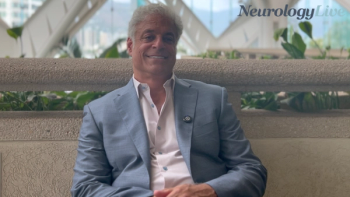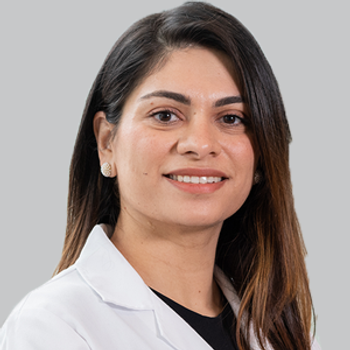
Clinical Insights on the Emerging Trends in Research for NMOSD and MOGAD
Erin Longbrake, MD, PhD, associate professor of neurology at Yale School of Medicine, discussed the importance of understanding rare autoimmune disorders to effectively design clinical trials and treatment strategies, especially for heterogeneous conditions like NMOSD and MOGAD.
In the clinical practice, it is important to differentiate multiple sclerosis (MS) from other relapsing inflammatory autoimmune diseases of the central nervous system such as neuromyelitis optica spectrum disorder (NMOSD) and myelin oligodendrocyte glycoprotein antibody-associated disease (MOGAD). The diagnosis of these conditions may be challenging to differentiate but making an accurate diagnosis is essential, since prognosis and treatments are different for each patient. Thus, having a misdiagnosis and inappropriate prescribed treatment may further promote disability. This field has seen significant advances over the last 2 decades, including new diagnostic criteria to better characterize clinical symptoms and also suggestive imaging lesions in MRIs.1
At the
After her talk, Longbrake sat down in an interview with NeurologyLive® at the meeting to discuss the progress in NMOSD, and the introduction of FDA-approved medications for aquaporin-positive patients. She also talked about the clinical presentations of MOGAD and emerging patterns that are noted in patients with MOG-associated antibodies. In addition, Longbrake spoke about why it is challenging to conduct clinical trials for heterogeneous conditions like seronegative NMOSD, and the significance of identifying homogeneous patient groups.
NeurologyLive: Can you provide an update on the field of MS and related autoimmune diseases?
Erin Longbrake, MD, PhD: I spoke at the conference about NMOSD and MOGAD. We really focus on how to differentiate those 2 conditions from MS. MS, NMOSD, and MOGAD are probably the 3 most common demyelinating CNS neuroimmune diseases. AQP4-IgG NMOSD probably had its big year 1 or 2 years back with the approval of 3 medications. These 3 FDA approved medications to treat aquaporin for positive disease are eculizumab (Soliris; Alexion), inebilizumab (Uplizna; Horizon Therapeutics), and satralizumab (Enspryng; Genentech). There has not been a lot of tremendous change since that happened. We still have no treatment approved for seronegative NMOSD. It's become clear that a good chunk of seronegative NMOSD is MOGAD.
During my talk, I discussed a bit about MOGAD and the clinical presentations of the disease, the most common ones being optic neuritis, longitudinally extensive transverse myelitis, and acute demyelinating encephalomyelitis. The spectrum of MOGAD is expanding, and we talked a bit about flare lesions associated with seizures and fever in patients who also have the disease. We also talked about how there is an emerging clinical presentation for patients with MOG-associated antibodies. Despite no treatments for MOGAD, there are some few clinical trials that are ongoing now.
What are you looking forward to in the next coming months in this field?
The better we understand the disease, the better we'll be able to recognize it. I think that's going to be a key to designing effective clinical trials. There's already some early work in trying to identify agents that may be effective against MOGAD specifically, and a few clinical trials that are already ongoing. I think we're probably still a few years away from what probably will be a heyday. It tends to be with these diseases that first we identify the disease and then we find the biomarker, which was a couple years ago.
Then we describe the full spectrum of the disease. We figure out all of the different clinical phenotypes so we get better at identifying it. From there, we can design effective trials and come up with effective treatments. That’s been the pattern for MS and AQP4-IgG NMOSD. I think that's probably what we're going to see in MOGAD as well, which means we're probably a few years away from seeing influx of clinical research and clinical trials. The good news is that it does seem to be a common enough condition that it's going to be relatively easy to study or at least learn more about it than AQP4-IgG NMOSD was at the time.
What are your thoughts on the case studies on seronegative patients becoming more frequent?
The seronegative patients are probably such a heterogeneous mix that it's not one thing, it's many things. We know we are studying homogeneous etiology, it's a lot easier to do a clinical trial and have a positive result when you're studying all of the same thing. When you have a mixed bag like these seronegative NMOSD cases, that's a lot more difficult to get an effective treatment if you in fact have different mechanisms causing the problem.
Especially with immune mediated diseases, there's a lot of different ways in which the immune system can go off the rails. If your mechanism doesn't address the correct problem, it's not going to help, and it might hurt. It's very important to be able to pull homogeneous patients and to correctly identify which patients are most likely to benefit.
Why are these insights on updates in NMOSD important for others in the field?
Well, NMOSD, AQP4-IgG, MOGAD are all distinct entities so much as you wouldn't treat seizures and migraines the same way, you're not going to treat MS and AQP4 disease the same way. They're different conditions and different medications are effective in each of those conditions. Even though clinically the phenotypes seem similar, the treatment strategies may need to be different and the counseling of the patients may need to be different. In order to give your patients the best care, it's important to recognize these patterns and correctly make the diagnosis.
Transcript edited for clarity.
REFERENCES
1. Carnero Contentti E, Okuda DT, Rojas JI, Chien C, Paul F, Alonso R. MRI to differentiate multiple sclerosis, neuromyelitis optica, and myelin oligodendrocyte glycoprotein antibody disease. J Neuroimaging. 2023;33(5):688-702. doi:10.1111/jon.13137
Newsletter
Keep your finger on the pulse of neurology—subscribe to NeurologyLive for expert interviews, new data, and breakthrough treatment updates.



































